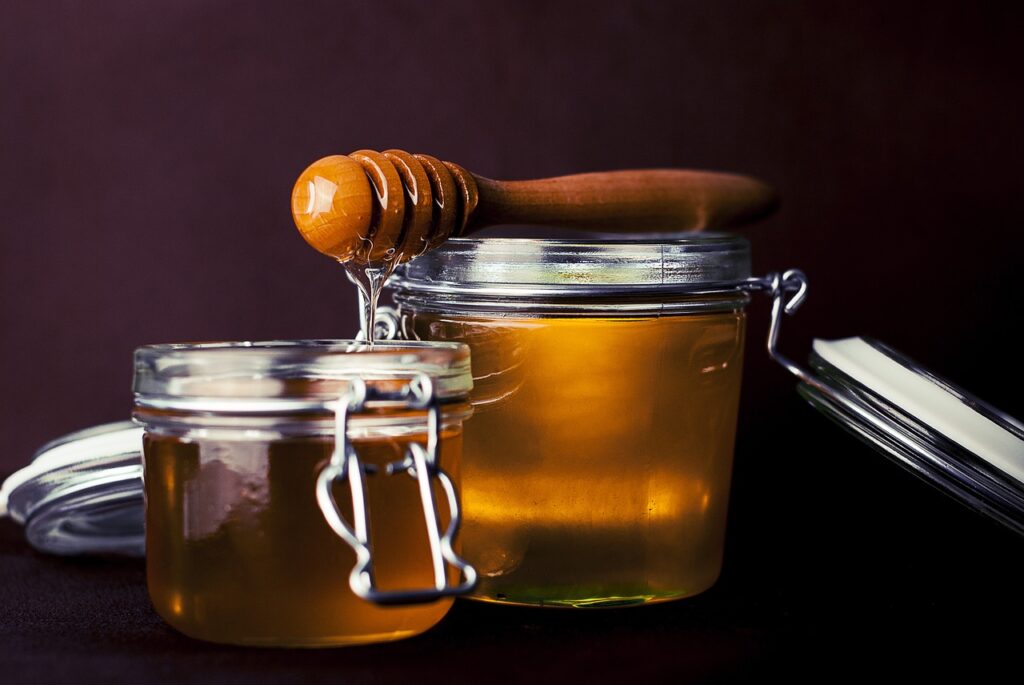Considering an Enzyme Facial Peel? 7 Top Skin Benefits
Trying to figure out how to take more active steps toward natural skincare? Well, when it comes to facials, enzyme facial peels are an easy way to decrease your chemical exposure, take advantage of natural skincare alternatives, and nurture your skin all at the same time.
- 1. Exfoliates Your Skin Naturally
- 2. Brightens Your Complexion
- 3. Promotes Skin Cell Renewal
- 4. Diminishes Fine Lines and Wrinkles
- 5. Boosts Absorption of Skincare Products
- 6. Reduces Hyperpigmentation and Evens Skin Tone
- 7. Unclog Pores and Minimize Breakouts
- Conclusion
- Enzyme Facial Peel Benefits FAQs
- What are the benefits of enzyme peels for the skin?
- What results can you expect from an enzyme peel treatment?
- How do enzyme peels work to exfoliate skin?
- Are enzyme peels safe for sensitive skin?
- What ingredients are in enzyme peel solutions?
- How often can you get an enzyme peel facial?
- What’s the difference between enzyme peels and chemical peels?
- Are enzyme peels safe to use while pregnant or breastfeeding?
- Can you use enzyme peels if you have acne?
- Can enzyme peels help with dark spots or hyperpigmentation?
- Can you use an enzyme peel before applying makeup?
- What should you avoid after an enzyme peel?
- Can you combine enzyme peels with other skincare treatments?
- Do enzyme peels work for mature skin?
These facial treatments aren’t your run-of-the-mill skincare routines or cosmetic facial treatments. Quite the opposite; they leverage the potent power of natural plant-based enzymes, specialized proteins that work wonders to shed dead skin cells.
To read more in-depth information about what enzyme facials are, as well as three super DIY recipes for different skin types, check out our recent post here:
What is an Enzyme Facial? 3 DIY Enzyme Peel Recipes
Now, let’s take a look at seven amazing benefits of enzyme facial peels below.
1. Exfoliates Your Skin Naturally
Remove dead skin cells with this gentle exfoliation method, which doesn’t require any physical exfoliation (using physical exfoliants like sugar, seeds, microbeads, etc. Physical exfoliation definitely has its place, but it’s easier to damage the skin with such methods when done incorrectly.
Instead, enzyme peels are a great way to break down the rough, dead skin cells and unmask the new layer of supple skin underneath in a way that makes it less likely to damage the skin.
- Enzyme peels primarily use fruit-derived enzymes for the exfoliation process and for smoother skin.
- No harsh chemicals? Exactly, you can create your own DIY enzyme facial peel recipes from completely natural ingredients and enzyme exfoliants.
- Factual nugget: Studies have shown that fruit enzymes like papain from papaya and bromelain from pineapple are effective exfoliants.
Confused about exfoliation? Regular exfoliation sloughs off dead skin cells, helping to reveal a brighter, more youthful appearance underneath. On top of that, exfoliation boosts blood circulation, giving your face a more renewed and natural glow. Lastly, it unclogs your pores and allows for the increased absorption of the precious serums and moisturizers in your beauty routine.
Exfoliation is key for all of these (and other) benefits, ultimately revealing new healthy skin cells.
2. Brightens Your Complexion
Dull skin is a problem for pretty much everyone due to habitual environmental damage and exposure. It’s not something that should be remedied merely with cover-up solutions like makeup or other options. Instead of hiding your skin behind makeup, improve your skin with natural ingredients and show off its radiant complexion.
Enzyme facial peel treatments painlessly peel away uneven tones by sloughing away dull and dead skin while also improving circulation.
- Enzyme peels gently peel away surface buildup and reveal brighter skin.
- A study published in the International Journal of Cosmetic Science suggests that enzyme peels can improve skin brightness.
3. Promotes Skin Cell Renewal
Here’s an interesting fact – the skin naturally rejuvenates itself every 30 days. With the introduction of enzyme facial peels, this process simply gets a bit of a boost, helping the skin remove dead cells from the top layer more efficiently. But how exactly does this work to improve skin health?
- Inhibition: Enzyme peels inhibit the enzymes responsible for cementing dead cells to your skin’s surface. This allows the skin to be easily washed away after the facial.
- Dissolving: After inhibiting, these enzymes (as key ingredients) also dissolve the dead skin cells, gently exfoliating the skin. Talk about multi-tasking!
- Stimulation: Lastly, the peels stimulate the production of new cells, making the skin renewal process more efficient.
4. Diminishes Fine Lines and Wrinkles
In a world obsessed with age-defying methods and techniques, enzyme peels stand out, battling fine lines, wrinkles, and other signs of aging one peel at a time.
Enzyme facial peels can help reduce the appearance of fine lines and wrinkles.
- Correct! Enzyme peels promote collagen production and can help promote more youthful skin.
- Fun Fact? Studies suggest that stimulating the skin’s natural collagen can reduce the appearance of fine lines and wrinkles.
As we age, our skin’s natural ability to exfoliate decreases. By stimulating cell turnover, enzyme peels slow the skin’s overall aging process.
5. Boosts Absorption of Skincare Products
Ever painted a wall that hasn’t been primed first? The paint kind of just slides around, and it’s pretty obvious it’s not going to adhere well after drying. Now, imagine your skincare products as paint.
Your skin and its resilient cells operate much like that unprimed wall when it’s covered in a layer of dead skin. It makes it more difficult for products to penetrate, and, in many cases, they end up simply resting on the surface. That can be rather frustrating when you’ve just invested in a natural luxury serum or spent time making a homemade lotion or face cream, isn’t it?
Now, here’s where an enzyme facial peel can be really effective:
An enzyme facial peel acts like a super-effective broom, sweeping away the dust (aka your dead skin cells) from the surface of your skin. This allows your skincare products to penetrate deeper into your skin, helping you receive their full benefits.
- Think about it: your nighttime deep moisturizer or antioxidant-rich serum will be able to seep into your skin, working as designed while your cells are in their nocturnal repair mode.
- Result? Maximized absorption means maximized efficacy of your skincare products. It’s that simple.
6. Reduces Hyperpigmentation and Evens Skin Tone
Chalk it up to sun exposure, aging, or just plain genetics, but hyperpigmentation is a common problem that plagues many of us, often making our skin appear uneven and aged.
Enzyme facial peels work by gently exfoliating the top layer of your skin, removing the dead skin cells and promoting the growth of new, healthy ones. This process helps to reduced pigmented or damaged skin cells, leaving you with an even, glowing complexion.
Key Players against Hyperpigmentation
Enzymes like papain (from papaya) and bromelain (from pineapple) are particularly stellar and helpful when it comes to reducing hyperpigmentation. But how exactly does that work? Let’s break it down:
| Enzyme | Action |
|---|---|
| Papain | Helps break down the proteins causing dark spots and improves skin texture. |
| Bromelain | Assists in removing dead skin cells, allowing new, even-toned cells to surface. |
Other plant enzymes can be effectively used, like pumpkin enzymes, but papin and bromelain are two of the most popular.
7. Unclog Pores and Minimize Breakouts
Are you someone who regularly deals with acne or acne-prone skin? Enzyme facial peels can be helpful for uncloging pores and preventing breakouts.
Enzyme facial peels can help unclog pores and prevent breakouts. Now, why are enzyme peels effective at unclogging pores and minimizing breakouts? Here’s why:
- Exfoliation: The peeling process enables your skin to shed dead cells, a major perpetrator of clogged pores. So, these cells should be removed before they, with bacteria, make a prime environment for causing a breakout.
- Bacteria Elimination: Bad bacteria are definitely not supporters of healthy or clear skin. Enzyme peels have the ability to neutralize these troublemakers, reducing the chance of skin breakouts.
- Pore Size Reduction: Enlarged pores are a gateway for dirt and oil. Enzyme peels work to reduce the size of your pores, preventing them from collecting dirt, oil, and bacteria.
Still, there are some factors to consider:
| Factors to Consider | Explanation |
|---|---|
| Sensitivity | Enzyme peels are usually more gentle on the skin. But if you have sensitive skin, tread carefully. It’s always best to seek expert advice before trying new skincare methods. |
| Cost | Unlike those fancy spa treatments that might cost an arm and a leg, enzyme peels can be a more budget-friendly alternative and can be done at home. |
Studies show that enzymes like Bromelain can potentially be used for the treatment of acne, primarily due to their antimicrobial and anti-inflammatory properties. Of course, always check with your healthcare professional if you have any specific skin conditions, skin issues, or other skin problems.
Conclusion
Enzyme peels offer a gentle, natural way to exfoliate and brighten the skin without the irritation that often comes with stronger chemical peels.
By helping break down the keratin in dead skin cells, they reveal a smoother layer underneath and support a healthy, radiant complexion. With consistent use, enzyme peels can become a calming, effective part of any simple, natural skincare routine.
Enzyme Facial Peel Benefits FAQs
What are the benefits of enzyme peels for the skin?
Enzyme peels can:
- Gently exfoliate without scrubbing
- Brighten dull or uneven skin
- Help even out skin tone
- Unclog pores
- Smooth fine lines and rough texture
- Support healthy skin turnover
- Improve absorption of moisturizers and serums
- Refresh the complexion without irritation
What results can you expect from an enzyme peel treatment?
Many people see smoother, softer, more radiant skin immediately. With regular treatments, enzyme peels help:
- Fade dark spots
- Reduce dullness
- Improve tone and texture
- Maintain a healthy glow
How do enzyme peels work to exfoliate skin?
Enzymes gently dissolve dead skin cells and debris at the surface. This process:
- Removes buildup without abrasion
- Reveals fresher, brighter skin
- Helps products absorb more deeply
- Leaves the skin feeling clean and renewed
Are enzyme peels safe for sensitive skin?
Yes. Because they work only on the top layer of skin, enzyme peels are usually well tolerated, even for sensitive skin. Always patch test first to make sure your skin responds well.
What ingredients are in enzyme peel solutions?
Most enzyme peels are made from fruit enzymes, such as:
- Papaya
- Pineapple
- Pumpkin
- Apple
Some formulas include gentle acids like lactic acid to boost exfoliation while staying mild.
How often can you get an enzyme peel facial?
Enzyme peels are mild enough for weekly or biweekly use. DIY peels can often be done once or twice a week. If you have sensitive skin, spacing treatments to once per month may feel more comfortable.
What’s the difference between enzyme peels and chemical peels?
Chemical peels use stronger acids to penetrate deeper layers of skin. Enzyme peels stay on the surface and provide mild exfoliation with less risk of irritation, making them ideal for most people and for regular at-home use.
Are enzyme peels safe to use while pregnant or breastfeeding?
Most simple, fruit-based enzyme peels are considered gentle, but it’s always best to speak with your healthcare provider first. Avoid peels containing strong acids or heavy essential oils unless approved.
Can you use enzyme peels if you have acne?
Yes, many people with acne benefit from enzyme peels because they:
- Help unclog pores
- Remove dead skin buildup
- Keep the surface clean without harsh scrubbing
Those with active, irritated acne should patch test first and avoid rubbing the skin.
Can enzyme peels help with dark spots or hyperpigmentation?
Consistent use can help fade dark spots by encouraging healthy cell turnover and removing dull surface buildup. For stubborn spots, pair enzyme peels with brightening ingredients like vitamin C.
Can you use an enzyme peel before applying makeup?
Yes. Enzyme peels leave the skin smooth and soft, creating a more even base for makeup. Always moisturize afterward, especially if you plan to apply foundation or powder.
What should you avoid after an enzyme peel?
After exfoliating, your skin may be more sensitive than usual. Avoid:
- Sitting in direct sun
- Using retinol or strong exfoliants the same day
- Applying heavy fragrances or harsh products
Moisturize well and use sunscreen if you’ll be outdoors.
Can you combine enzyme peels with other skincare treatments?
Yes, but space them out. Enzyme peels pair well with hydrating masks, gentle moisturizers, and calming serums. Avoid combining them with acids or physical scrubs on the same day to prevent irritation.
Do enzyme peels work for mature skin?
Absolutely. Enzyme peels help smooth texture, brighten tone, and support healthy turnover, all of which benefit mature skin. Their gentle nature also makes them ideal for delicate or thinning skin.


